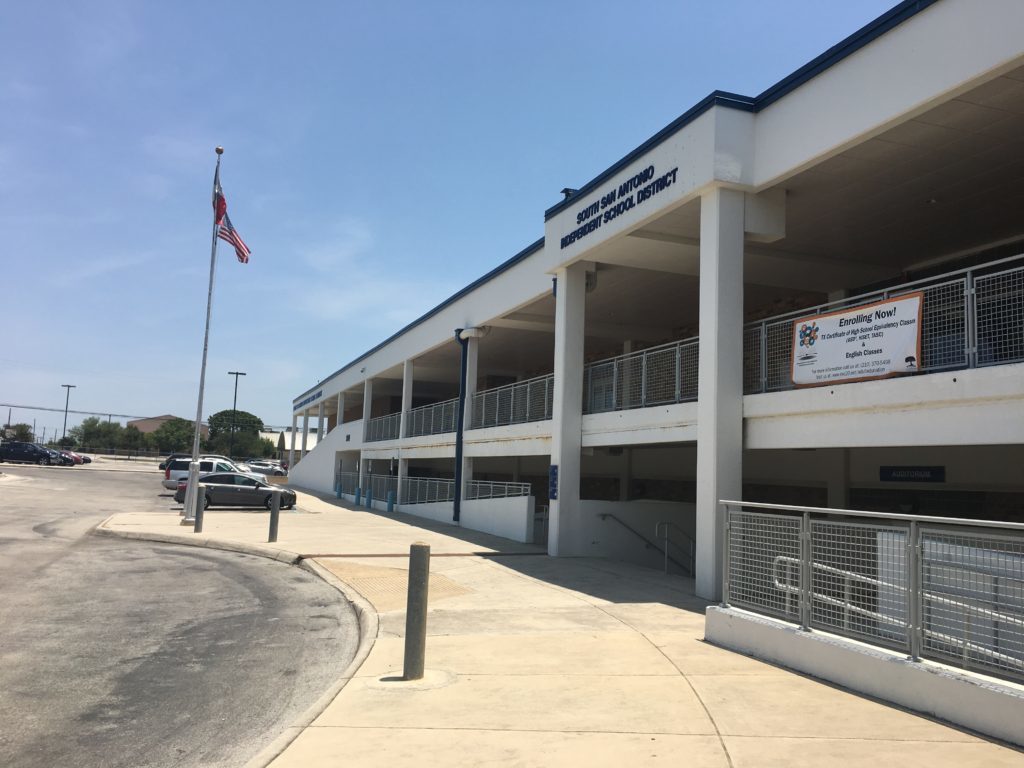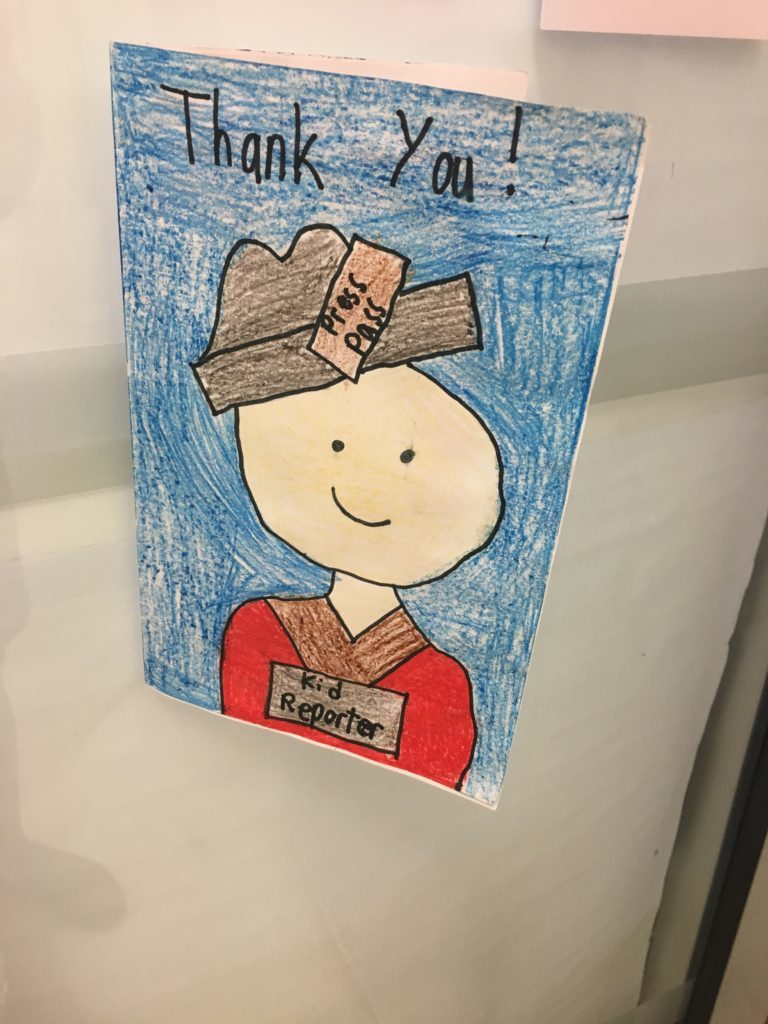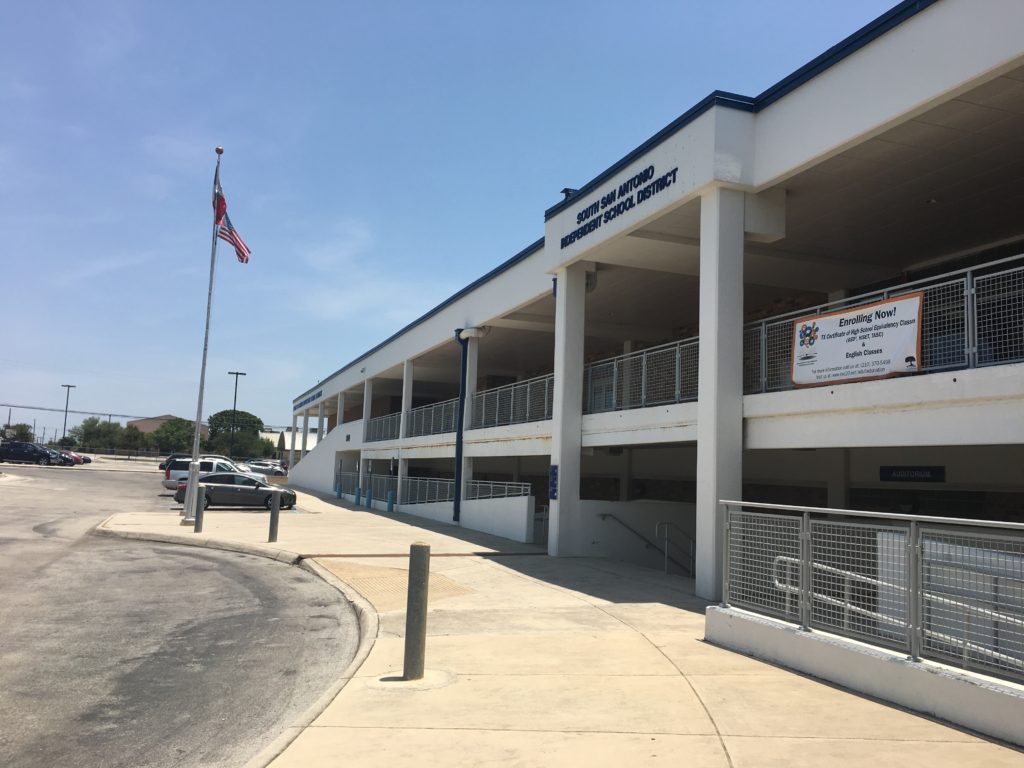Note from SA Charter Moms: We are proud to share guest posts from hallmonitor covering San Antonio’s public schools.

South San Antonio ISD is working harder than ever to remake their district. For as much energy and ink as its board controversy consumed for decades, the schools themselves have kept their head above water, academically speaking.
South San ISD is losing students. Its student population has dropped 14 percent since the 2013–14 school year, and that’s come with a $6.4 million price tag in lost revenue. Charter schools in the area don’t account for all of this, said Delinda Castro, South San’s chief academic officer, but it is due to parent choice.
Some choose charter schools, she said, but many choose other school districts. Districts with more options, more magnet programs, more specialized campuses.
Now, with the board in remission, the district is moving ahead more aggressively to win back students. It was part of the first cohort of the Texas Education Agency’s System of Great Schools initiative, and will continue on as part of the second cohort as well. The State offered a second round of coaching to the district to ensure that the seeds planted in year one would take root.
The SGS model is designed to change the way districts operate in relationship to their schools. It uses four levers—accountability, open enrollment, increased options, and school autonomy—to help districts become less bureaucratic and more nimble when it comes to school improvement. It also helps them be more competitive.
When South San opened up magnet programs—fine arts, health technology, and STEM—at three middle schools, they found that the hunger for choice alive and well within the district. Of the 728 rising sixth graders in the district, 370 are participating in magnet programs.
“We were very surprised at how many kids and parents chose our academies,” Castro said.
The initiative is designed to go beyond magnet programs, though, and South San is getting there.
While neighboring San Antonio ISD, also part of the first SGS cohort, took a “yes, and . . .” approach to the model—partnering with charter networks, nonprofits, and expanding its innovation zone, bolstering the role of the principal—South San is taking a more methodical approach.
TEA doesn’t expect any district to utilize all the levers necessarily, but it does encourage them to think big. The agency is pleased with what they are seeing at SAISD, according to SAISD officials.
South San’s more methodical rollout represents a different approach, one that may make fewer waves, but they hope will be just as effective.
First up, lever one. Castro’s office created a performance framework that is far more tailored to the priorities of the South San community than the A–F system used by the State.
“There are other things besides test scores that make a school excellent,” Castro said.

Someone else might have this story . . .
That would ring hollow if the district had a bunch of schools failing to meet state standards, but they don’t. They want to adopt more ambitious goals, not less, Castro said. Their proposed score sheet includes more high-touch criteria and a focus on growth. They hope that the board will adopt the framework sometime this school year.
“It really takes [accountability] out of TEA and puts it on the board and us,” Castro said.
Lever two of the SGS initiative is to “expand great options.” This is the lever that brings in charter networks, creates specialized schools, and puts magnets all over the district. South San has its magnets and an early college program in place. It isn’t partnering with charters, universities, or nonprofits just yet, Castro said, but they aren’t closed to the idea.
They are working toward lever three, which ensures that all options are accessible. Transportation is key, and South San will provide transportation to all of the academies from anywhere in the district, Castro said. The enrollment offices have a common application where parents can fill out one form and rank their choices within the district.
Lever four creates autonomous schools. This is actually the lever that has generated the most controversy in SAISD. On the surface it appears that charter school partnerships are the sticking point, when it is actually the move toward principals with more say over staffing and school design, and a change in the role of the board. In the SGS model, instead of voting on operational decisions like curriculum, hiring and firing, and school calendar, the board simply holds autonomous schools accountable to meeting the performance criteria. SAISD is a long way from being there as a district, but each step has been contested.
In South San, Castro anticipates a far less bumpy transition. She sees the main change as one of purpose. Central office, she said, will have to compete to be the service provider of choice for South San campuses. Principals can choose to use the curriculum coaches, bilingual services, gifted and talented resources, and special education services provided by the district, or they can find someone who does it better. Principals can contract with universities, nonprofits, or other districts to provide services that meet the needs to their campus.
If the campuses have to compete on a more open market, so does Central Office.
“It’s a reframing of central office,” Castro said, “We’re here to serve schools, not the other way around.”
Campus autonomy around hiring and firing will not be controversial, Castro said, because it already exists. Saavedra promotes this kind of autonomy, she said. And South San does not award continuing contracts. If a teacher does not perform well, their principal can request that their contract not be renewed. Central office and the board defer to the principal, she said.
“That’s what’s really been the difference between here and other districts,” Castro said. They serve a high poverty population. Many students are highly mobile and many do not speak English as a first language. Their ability to stay out of academic sanction, Castro said, is closely linked to their teaching corps. “If you have a poor employee, if they’re not serving kids, they don’t stick around in South San,” she said.
Hearing Castro describe her work, it sounds like a steady march toward the goal. Meanwhile, the residents of South San will vote on a tax rate increase in August, four out of seven board seats are up for election in November, and the district is hunting for a new superintendent. So the various changes involved with the SGS initiative may be the least turbulent item on the district’s agenda.
A swing back to the days of dysfunction could slow progress. But Castro thinks that things have gotten past the point that the initiative could be totally stalled or derailed.
Originally published as “South San methodically pulling levers to win back students and improve schools,” Hall Monitor, July 27, 2018
Read more:
- “[Hall Monitor] Diego Bernal Preps for 2019 with ‘What They Said 2.0,'” San Antonio Charter Moms, October 6, 2018
- “[Hall Monitor] Summer Internships Narrow the Opportunity Gap,” San Antonio Charter Moms, September 29, 2018
- “[Hall Monitor] Like Master Teachers, SAISD’s New Network Principals Can Advance in the Jobs They Love,” San Antonio Charter Moms, September 15, 2018
- “[Hall Monitor] SAISD Asked Business Leaders for Support and They Delivered,” San Antonio Charter Moms, September 9, 2018
- “[Hall Monitor] In Becoming a ‘System of Great Schools,’ SAISD Is Fighting for Its Life,” San Antonio Charter Moms, June 30, 2018
